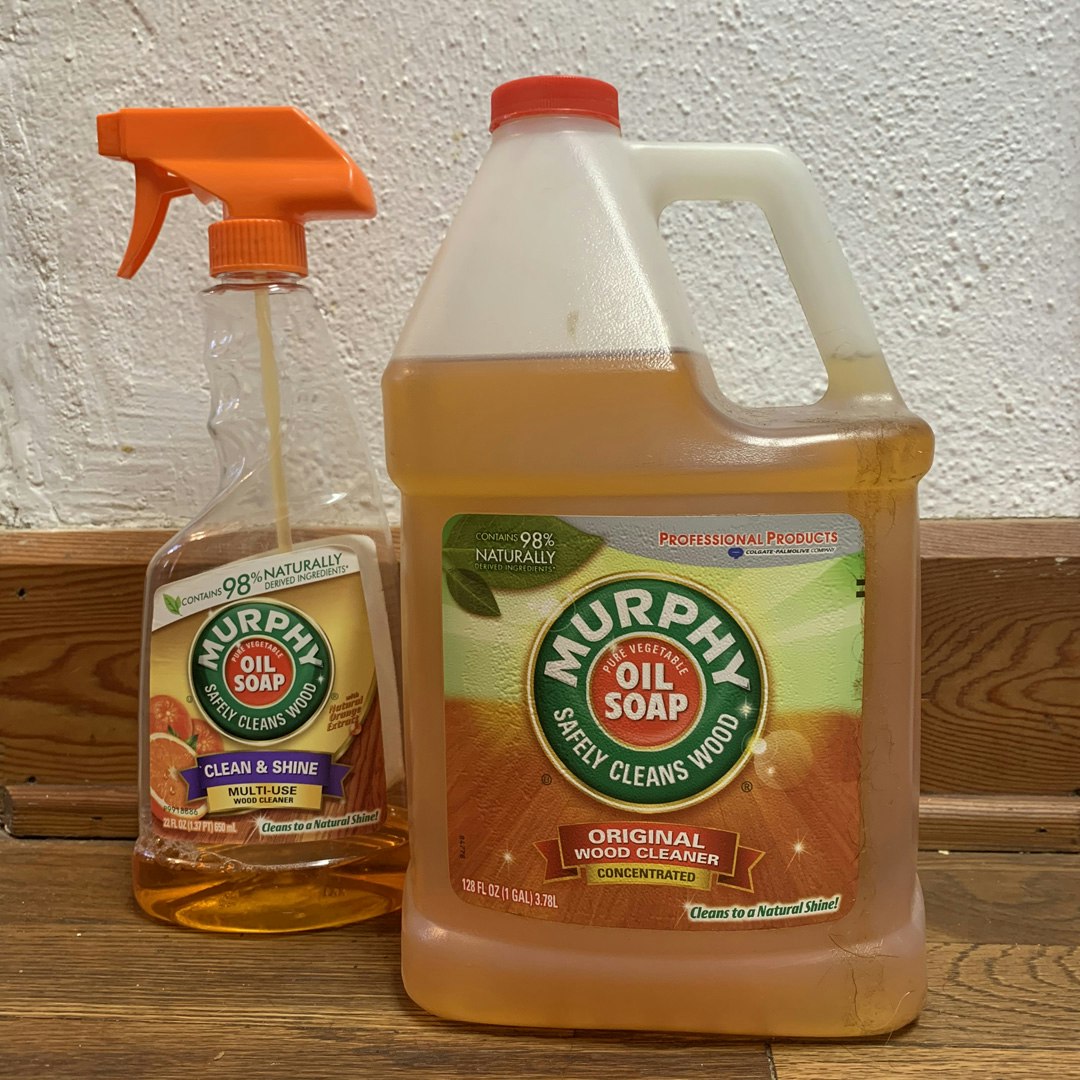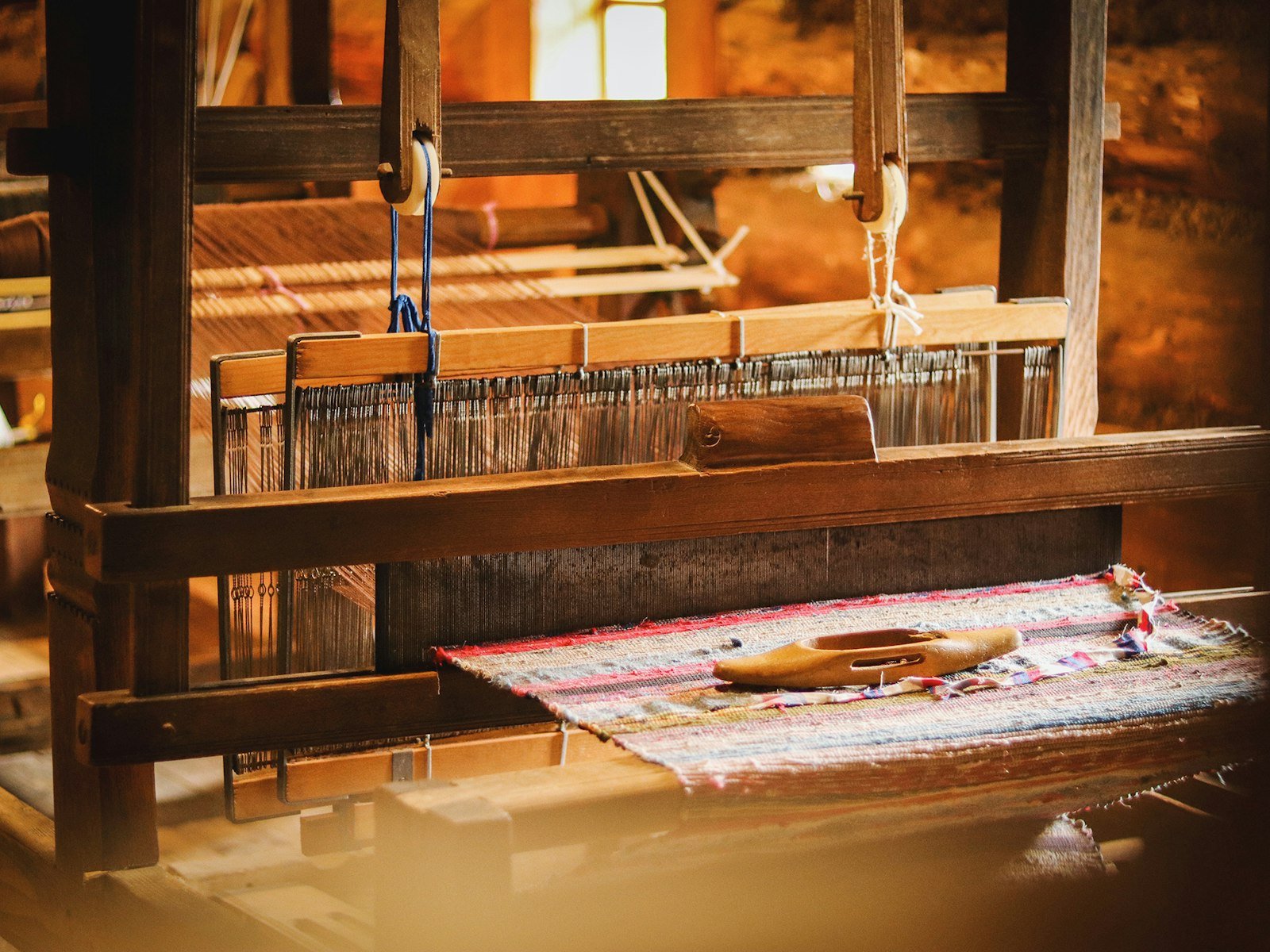Throughout the pandemic we have received questions about how to sanitize looms in a way that won’t harm the wood or the finish. Rather than try to muddle through an answer ourselves, we asked loom expert and frequent Handwoven contributor Liz Moncrief to help us out. In honor of World Health and Safety at Work Day, April 28th, 2022, here is what Liz learned in her research. Please note that this is not a substitute for contacting your local health department, but it will help you get your loom clean and sanitized without causing permanent damage. —Christina
From my experience, looms will either be raw, unfinished wood (and it shouldn’t be left this way), oiled, waxed, or varnished. Each of these finishes, or non-finishes in the case of the raw wood, has different peculiarities when washing/sanitizing that I’ll cover here.
First, for the raw wood: it’s not good for a loom to remain in this state. Raw wood is too susceptible to the vagaries of humidity, mold, and bugs. If your wood is raw, you should coat it with oil, wax, or varnish. That will protect your loom from many outside threats and make it easier to sanitize.
One caution here: We all know how wonderful a good coating of oil is for wood. It penetrates and “feeds the wood” (not really, but it sounds good). It helps to preserve the wood. Just a pinch of pennyroyal, mint, or eucalyptus oil in the whole oil is very good for keeping the bugs away and making the loom smell great. Cedar oil, too. But never, never try to apply oil on top of varnish. Varnish is a true sealant, and the oil has nowhere to go. It’ll just sit there and get mucky, attract dust, and get nasty in a hurry.
To clean all looms, regardless of finish, use oil soap on everything that is touchable. Old looms have likely been handled by a lot of weavers; dogs, cats, and bugs have chewed on the wood. Dare I even mention children? Whether your loom is oiled, waxed, or varnished, use Murphy Oil Soap or another good-quality oil soap. The point is that you want something with an oil base, not a detergent base. If you have cracks or splits in the wood, you’ll be fine with an oil-based soap.
If the wood has an oil finish, some slight soap residue could seep in, but it’s not an issue for the reasons above. If you have a wax or varnish finish, the finishing material coats the surface of the wood enough so that it cannot be penetrated by humidity, bugs, or oil soap. If there are cracks, the oil soap will be fine. Let your loom dry for a minimum of 3 to 4 days if you’re in a dry climate. If you’re in a humid climate, let it dry out longer.

Murphy Oil Soap and is what Liz recommends to clean looms before sanitizing further. Photo Credit: Christina Garton
Once your loom has dried, you can use an alcohol wipe on the finish—not a saturated cloth, but the wipes that we could buy back in January. Wipes need to be 62% alcohol to be effective. I have wipes containers that have dried up, so I just add a mix of water and alcohol at 60+%, and they’re good to go again.
So long as you have a good finish on your wood, the alcohol solution on the wipes will simply evaporate; however, the loom needs to remain wet for a minimum of 4 seconds—longer if possible. I’ve checked with my 2 woodworker friends, and they concur. We all also say NO BLEACH. Bleach is bad for the wood and the finish. This means no spray bleach, no spray sanitizer such as Lysol, no bleach wipes or Lysol wipes.
If you need to regularly sanitize looms—for a guild studio or school setting, for example—you don’t need to use oil soap every time. Using the alcohol wipes as directed above should be fine. That said, looms should be oil-soaped once a year as part of a regular cleaning routine.
I’ve been rehabbing looms for a long time, but this is my first challenge to “what do we do now,” and I’m glad that we’re talking about it. Many of us are getting to the point that we’re more vulnerable to illness, but even in non-COVID times, we should have been thinking about how to sanitize our looms to protect from the common cold, flu, and other illnesses.
—Liz Moncrief
Originally published July 8, 2020 Revised May 2, 2022

